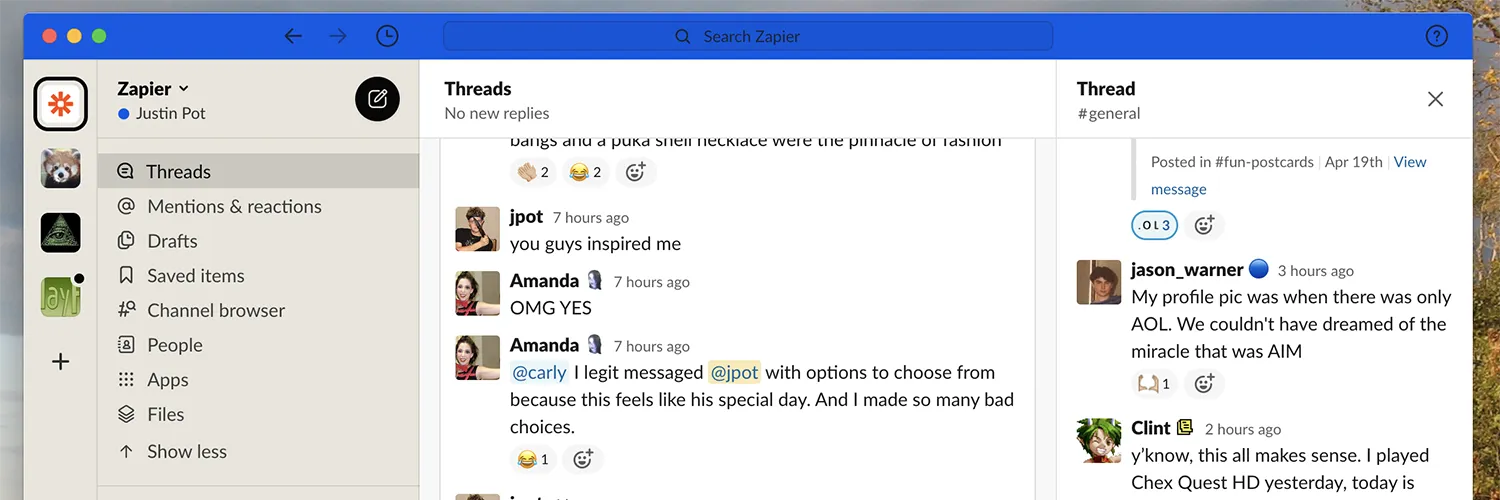As we navigate the complexities of lockdown, many have drawn parallels between our current digital communication habits and the social dynamics of high school. With tools like Slack becoming our primary means of connection, it’s easy to liken it to the nostalgia of instant messaging on AIM (AOL Instant Messenger). The similarities between the two can be humorous and enlightening, illustrating how we adjust to our new reality. Let’s dive deeper into this comparison and how it reflects our evolving communication styles.
High School Hierarchies in the Digital Age
In high school, social structures were often dictated by cliques and popularity. Similarly, on Slack, we see a hierarchy emerge through channels and direct messages. Just like the cafeteria tables where groups congregate, Slack channels can feel like designated hangout spots where specific teams or interests flourish. This creates a sense of belonging, but it can also lead to feelings of exclusion.
| High School | Slack |
|---|---|
| Cliques and Groups | Channels and Teams |
| Lunchroom Gossip | DMs and Reactions |
| Classroom Participation | Channel Engagement |
Communication Styles: From AIM to Slack
When AIM was the go-to platform for teen communication, we expressed ourselves through away messages, screen names, and emojis. Today, Slack has its own set of features that mimic this expressiveness but in a professional setting. The way we interact on Slack can often feel like we’re back in high school, trying to impress our peers while also navigating the complexities of work relationships.
For instance, just as screen names on AIM conveyed personality, our Slack profiles and statuses showcase who we are in a professional context. Utilizing emojis in Slack messages is akin to the playful use of emoticons in AIM chats, adding a layer of personality to our conversations.
The Social Dynamics of Online Communication
Lockdown has intensified our reliance on digital communication, making the dynamics of interaction more pronounced. On Slack, just like in high school, the timing of responses can create tension. A delayed reply may feel like being ignored in class, while a quick response can make one feel like the popular kid who always knows what to say.
Moreover, the phenomenon of “read receipts” has become a modern version of passing notes in class. We can see when someone has viewed our message, leading to anxiety similar to waiting for a classmate to respond to a note. This aspect of Slack communication can heighten feelings of pressure and expectation, reminiscent of the social anxieties of teenage years.
Collaboration vs. Competition
In high school, collaboration was often a mixed bag. Group projects could lead to teamwork or competition, depending on the personalities involved. On Slack, we see a similar blend of collaboration and competition. While channels are designed for teamwork, individuals may sometimes feel the need to stand out or compete for recognition.
| Collaboration | Competition |
|---|---|
| Team Projects | Individual Contributions |
| Shared Goals | Seeking Recognition |
| Collective Success | Personal Branding |
Managing Relationships in a Digital High School
Just as navigating friendships in high school required social skills, managing relationships on Slack demands a similar approach. Understanding tone, context, and timing is crucial to effective communication. Misunderstandings can easily arise, much like the rumors that spread through school hallways. It’s essential to be mindful of how our messages may be perceived, ensuring that we maintain positive relationships with colleagues.
In both scenarios, emotional intelligence plays a critical role. The ability to read the room—whether in a classroom or a Slack channel—can significantly impact our interactions. As we adapt to our new normal, developing these skills is key to thriving in our digital high school environment.
The Future of Communication: Lessons from High School
As we reflect on the parallels between lockdown communication and high school dynamics, it’s clear that our experiences shape how we interact. Going forward, we can learn valuable lessons from both worlds. Embracing collaboration, understanding the importance of timing, and being mindful of our communication styles can help us create a more inclusive and supportive digital environment.
In conclusion, as we adapt to lockdown and the reliance on platforms like Slack, let’s embrace the nostalgia of high school while also growing beyond it. By acknowledging the similarities and differences, we can foster better communication and strengthen our connections, ultimately making our professional lives more fulfilling.





